JERUSALEM: Leaders of major churches have accused Israeli authorities of launching a “coordinated attack” on the Christian presence in the Holy Land by initiating tax proceedings against them.
While Israeli officials have tried to dismiss the disagreement as a routine financial matter, the churches say the move upsets a centuries-old status quo and reflects mounting intolerance for the tiny Christian presence in the Holy Land.
In a letter to Prime Minister Benjamin Netanyahu this week, the heads of the major Christian denominations alleged that four municipalities across Israel had recently submitted warning letters to church officials cautioning them of legal action if they did not pay taxes.
“We believe these efforts represent a coordinated attack on the Christian presence in the Holy Land,” wrote the heads of the Catholic, Greek Orthodox and Armenian Orthodox churches. “In this time, when the whole world, and the Christian world in particular, are constantly following the events in Israel, we find ourselves, once again, dealing with an attempt by authorities to drive the Christian presence out of the Holy Land.”
Christians are a tiny minority, making up less than 2 percent of the population of Israel and the Palestinian territories. There are 182,000 Christians in Israel, 50,000 in the West Bank and Jerusalem and 1,300 in Gaza, according to the US State Department. The vast majority are Palestinians.
The churches, who are major landowners in the Holy Land, say they do not pay property taxes under longstanding tradition. They say their funds go to services that benefit the state, like schools, hospitals and homes for the elderly.
The letter said the municipalities of Tel Aviv, Ramla, Nazareth and Jerusalem in recent months have all either issued warning letters or commenced legal action for alleged tax debts.
The Jerusalem municipality told The Associated Press that the church had not submitted the necessary requests for tax exemptions over the last few years. It said that “a dialogue is taking place with the churches to collect debts for the commercial properties they own.”
The other municipalities did not immediately comment. It was unclear if the municipalities acted in a coordinated effort or whether the tax moves are coincidental.
In 2018, Christians closed the Church of the Holy Sepulchre — revered by Christians as the site of Jesus’ crucifixion and resurrection — to protest a move by Israeli officials to impose taxes on commercial properties in the holy city.
The Christian leaders argued that the sites — like pilgrim hostels and information centers — served important religious and cultural purposes, and that taxing them would infringe on Christian religious observance in the Holy Land. After the public backlash, Netanyahu quickly suspended the plan.
Heads of churches say Israeli government is demanding they pay property tax, upsetting status quo
https://arab.news/2yk79
Heads of churches say Israeli government is demanding they pay property tax, upsetting status quo

Syria’s president Al-Sharaa forms new transitional government

- The cabinet included Yarub Badr, an Alawite who was named transportation minister, while Amgad Badr, who belongs to the Druze community, will lead the agriculture ministry
Syrian President Ahmed Al-Sharaa announced a transitional government on Saturday, appointing 23 ministers in a broadened cabinet seen as a key milestone in the transition from decades of Assad family rule and to improving Syria’s ties with the West.
Syria’s new Sunni Islamist-led authorities have been under pressure from the West and Arab countries to form a government that is more inclusive of the country’s diverse ethnic and religious communities.
That pressure increased following the killings of hundreds of Alawite civilians — the minority sect from which toppled leader Bashar Assad hails — in violence along Syria’s western coast this month.
The cabinet included Yarub Badr, an Alawite who was named transportation minister, while Amgad Badr, who belongs to the Druze community, will lead the agriculture ministry.
Hind Kabawat, a Christian woman and part of the previous opposition to Assad who worked for interfaith tolerance and women’s empowerment, was appointed as social affairs and labor minister.
Mohammed Yosr Bernieh was named finance minister.
It kept Murhaf Abu Qasra and Asaad Al-Shibani, who were already serving as defense and foreign ministers respectively in the previous caretaker cabinet that has governed Syria since Assad was toppled in December by a lightning rebel offensive.
Sharaa also said he established for the first time a ministry for sports and another for emergencies, with the head of a rescue group known as the White Helmets, Raed Al-Saleh, appointed as the minister of emergencies.
In January, Sharaa was named as interim president and pledged to form an inclusive transitional government that would build up Syria’s gutted public institutions and run the country until elections, which he said could take up to five years to hold.
The government will not have a prime minister, with Sharaa expected to lead the executive branch.
Earlier this month, Syria issued a constitutional declaration, designed to serve as the foundation for the interim period led by Sharaa. The declaration kept a central role for Islamic law and guaranteed women’s rights and freedom of expression.
Does military’s recapture of Khartoum mark a crossroads in Sudan’s conflict?

- General Al-Burhan’s forces control key sites in the capital, including the airport, which will be critical for humanitarian relief
- Despite the losses in Khartoum, his foes have entrenched themselves in Darfur, maintaining a power base and foreign backing
LONDON: Sudan’s de-facto military ruler visited the presidential palace in Khartoum on Wednesday after his forces recaptured the city from a rival paramilitary group. Whether the development will prove to be a decisive moment in the conflict that has devastated the country since April 2023 remains to be seen.
Khartoum, once one of East Africa’s fastest-growing capitals, is today a ghost city, its residents displaced and its basic infrastructure in ruins. “It’s heartbreaking to see people dying in huge numbers from hunger in Sudan, once the breadbasket of East Africa,” Mathilde Vu, a Sudan-based aid worker with the Norwegian Refugee Council, told Arab News.
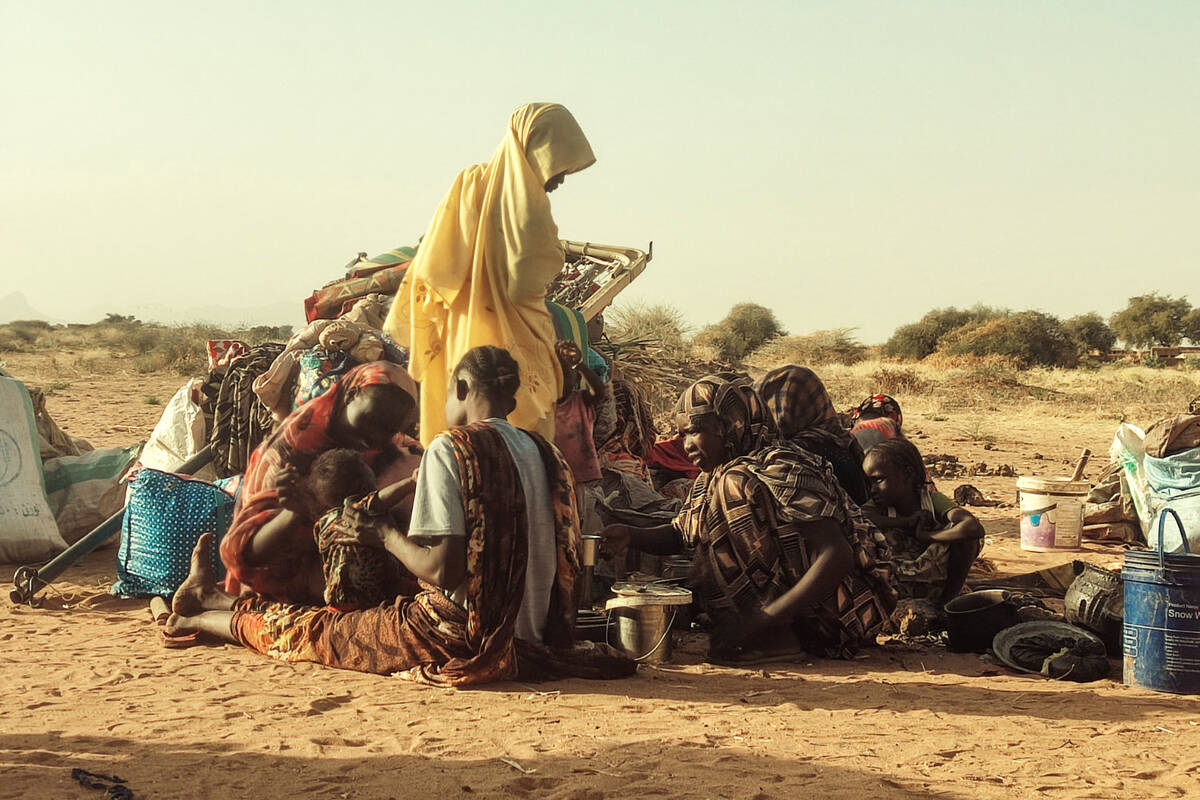
According to Vu, the humanitarian response in the capital depends heavily on grassroots efforts. “Local responders are the one hope of Sudan,” she said. “They operate without logos, without any resources, and yet they’ve organized evacuations, run soup kitchens, offered psychosocial support, even repaired water systems.”
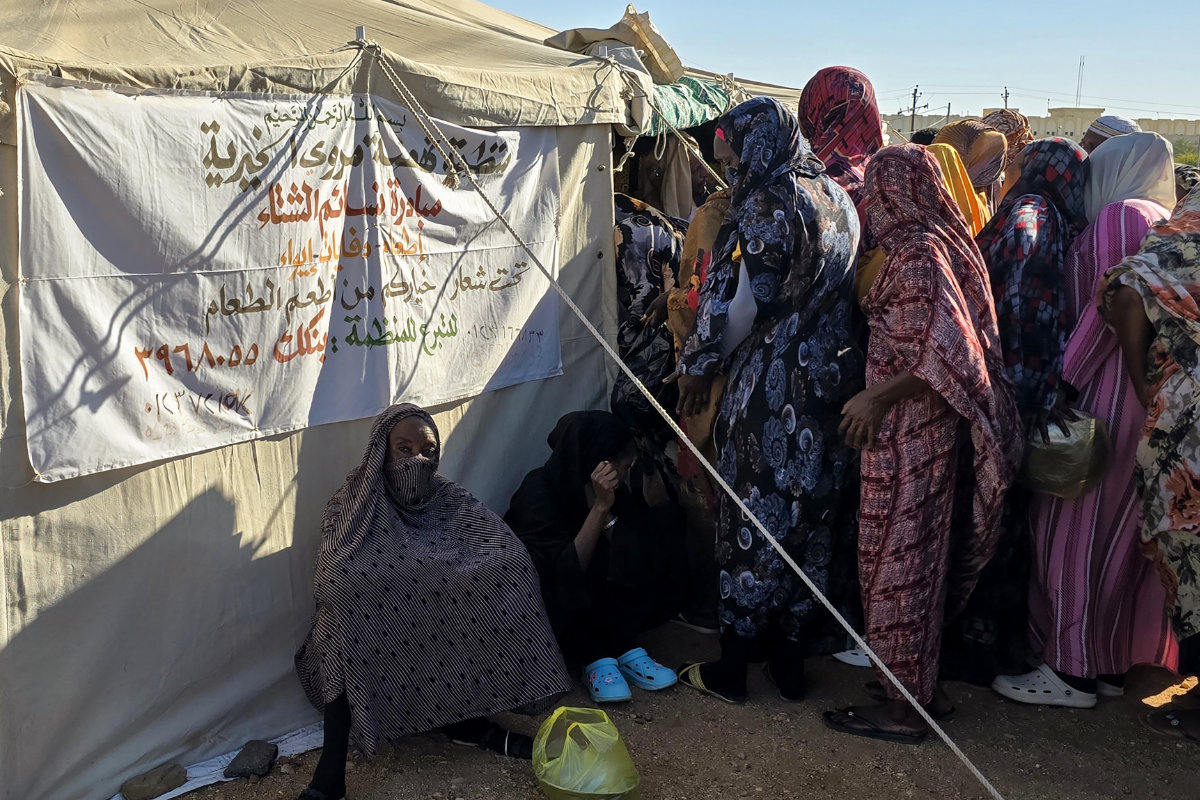
But these efforts are fragile and increasingly under threat, with at least 10 local responders killed during intensified fighting in March. “If one local responder dies, one kitchen is closed. And with that, entire families are left without food,” Vu said.
The Sudanese Armed Forces have in recent days consolidated control not just over the presidential palace, but also the central bank, the airport and the strategic Al-Yarmouk weapons manufacturing complex, having dislodged its adversary, the Rapid Support Forces.
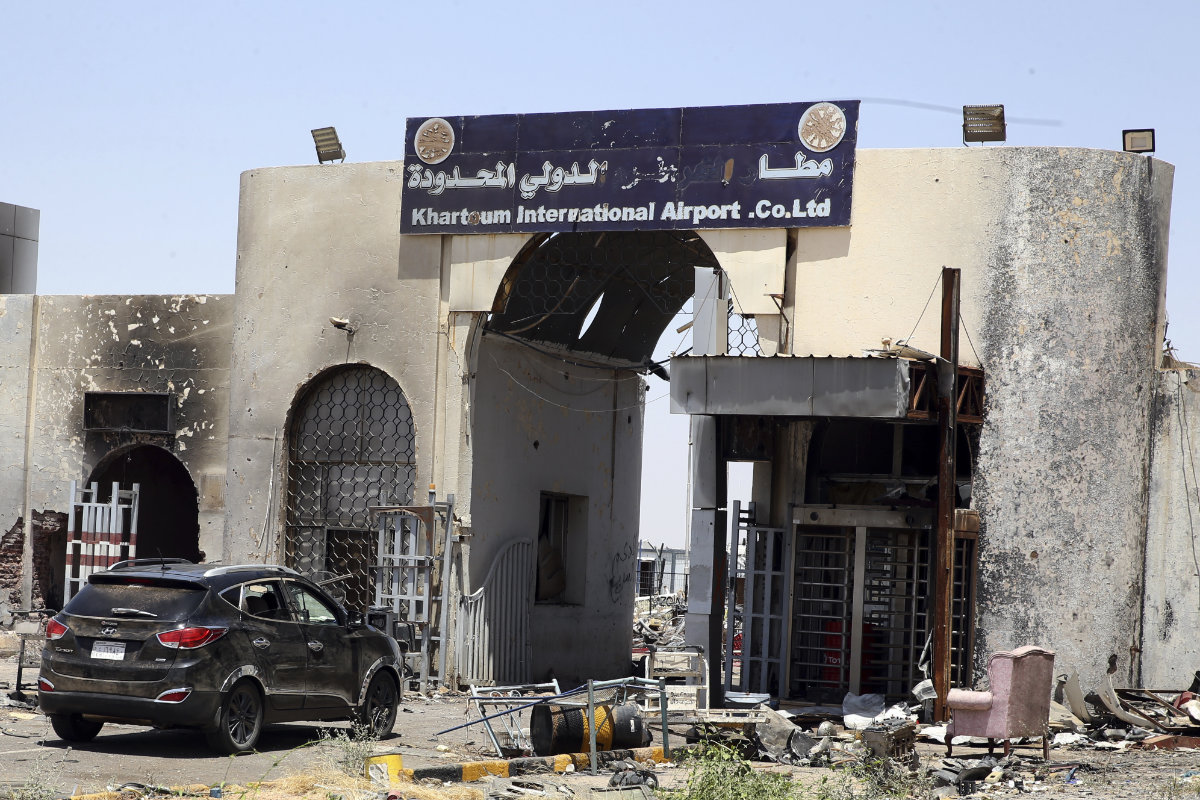
These are symbolic gains. But whether they will translate into stability or reconstruction is far from certain.
Abiol Lual Deng, a South Sudanese-American political scientist, cautions against assuming that the SAF’s return to the city signals a new era. “This is a city where people died from starvation and infectious disease — not just bullets,” she told Arab News.
“The fighting disrupted every part of urban life. Shops closed, fuel ran out, water became contaminated, and no one could move because of snipers and shelling.”
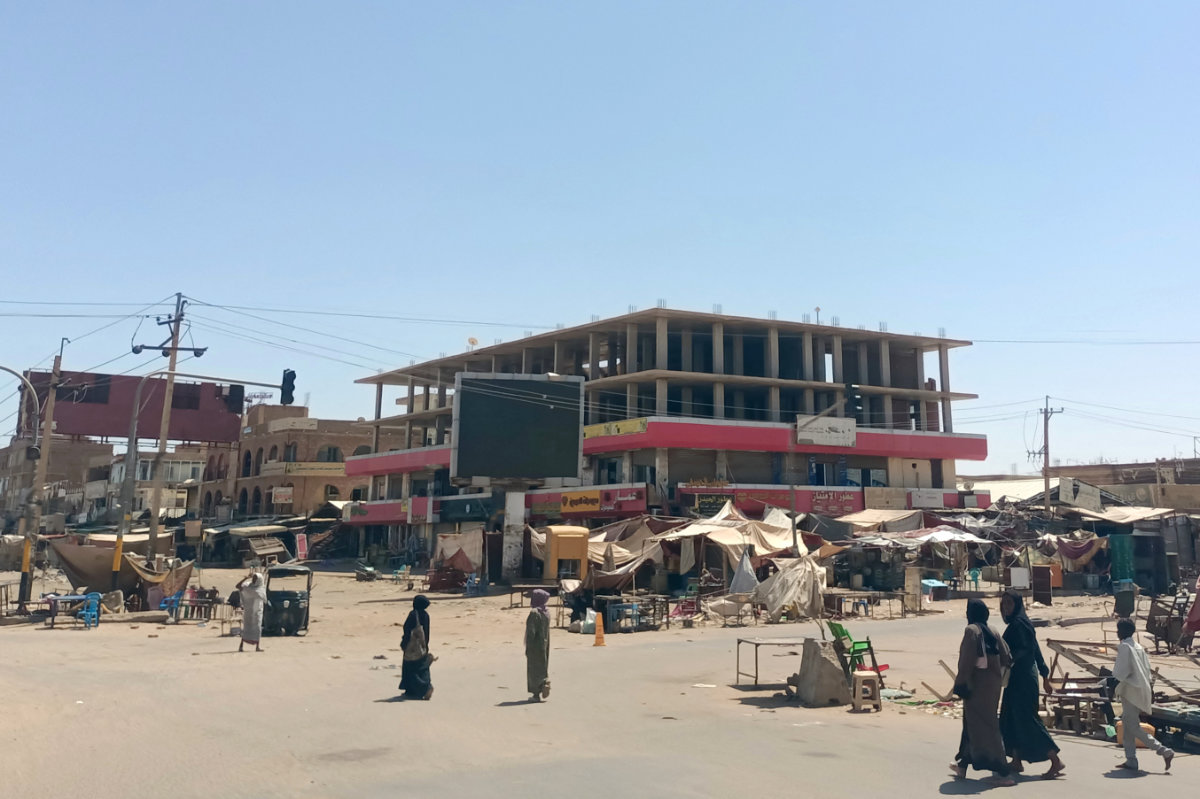
She added: “Now that SAF has retaken key areas like the airport, we might see some humanitarian aid trickling back in, especially for the wounded and those in critical need. But the scale of need is just unfathomable. Two-thirds of Sudan’s population requires assistance. This is not something a few aid flights can solve.”
The destruction of Khartoum’s civilian infrastructure has been especially devastating because of the city’s role in the national economy. Once home to the country’s key financial institutions, markets, and trade corridors, Khartoum’s paralysis has sent ripples across Sudan and beyond.
The SAF’s ability to maintain control over the capital will depend not just on military gains, but also on whether it can stabilize these essential services.
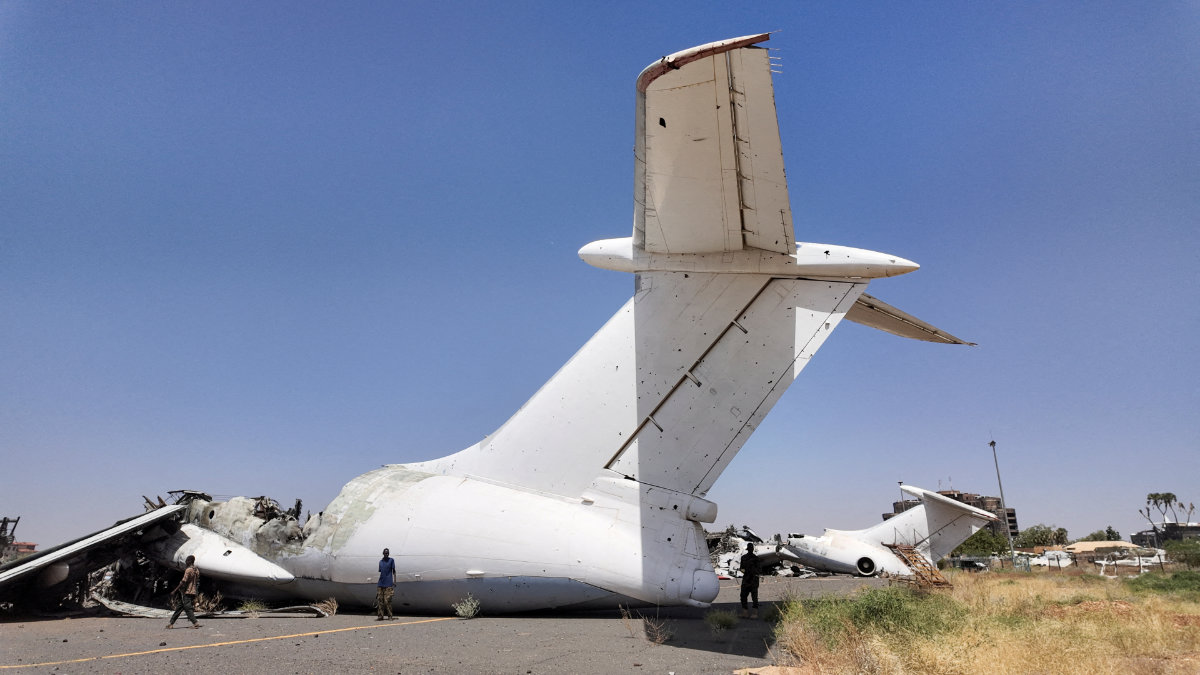
Dallia Abdelmoniem, a Sudanese analyst with deep experience in civil society networks, points out that many displaced civilians are already planning to return — despite the lack of security guarantees.
“For many Sudanese, they don’t have the privilege to wait for full reconstruction,” she told Arab News. “They’re returning to neighborhoods where there’s no running water, no banks, no healthcare. Civil society will be forced to fill the vacuum again.”
Yet any suggestion that the war is winding down would be premature. Having withdrawn from Khartoum, the RSF has entrenched itself in Darfur and other regions. There, it continues to function as a parallel authority, with reports of its leader, Mohamed Hamdan Dagalo, making diplomatic overtures to regional leaders.
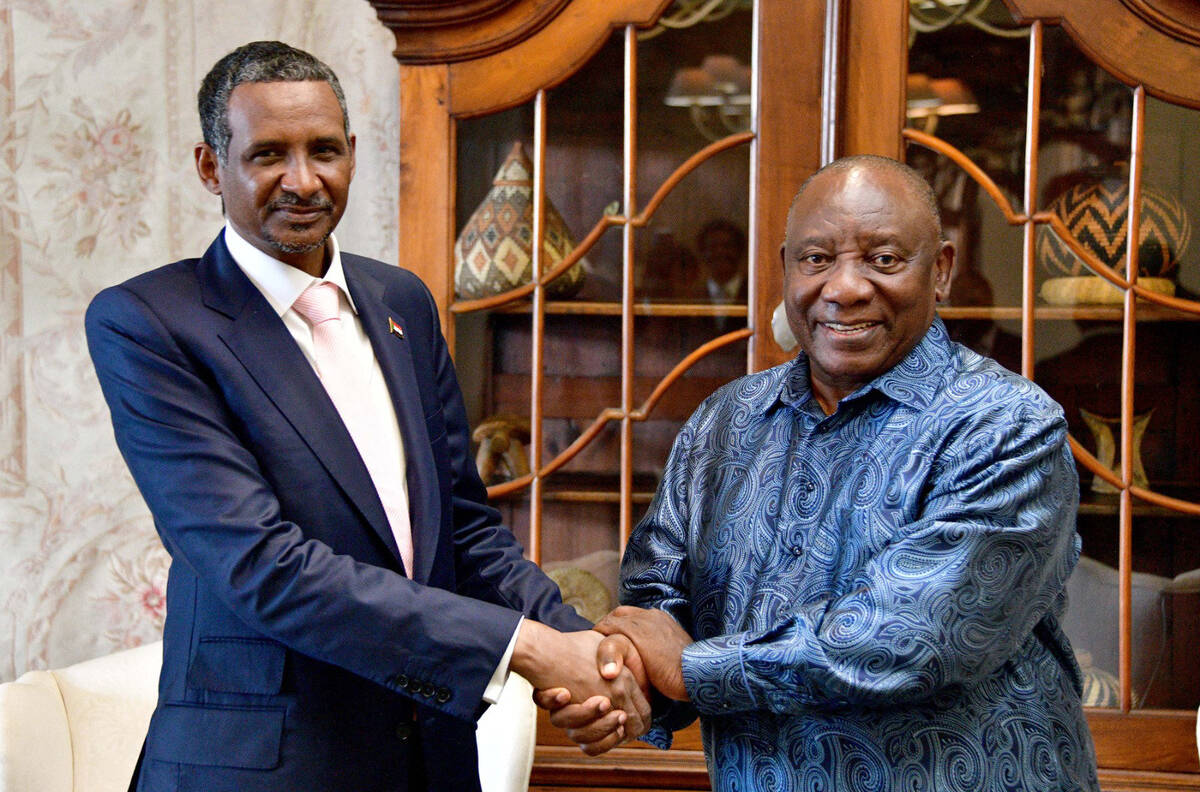
“The RSF has already established a parallel government,” said Deng. “They’re not disappearing. They have a base of power in Darfur, strong cross-border supply networks, and deep-rooted ethnic and regional dynamics backing them.”
She reminds observers that the RSF originated as a paramilitary force — evolving from the Janjaweed militias once backed by the central government — and has long been used to destabilize peripheries under the guise of counterinsurgency.
Abdelmoniem warns the SAF’s territorial gains may embolden it to pursue an outright military solution to the conflict. “Negotiations appear dead in the water,” she said. “SAF has political momentum now, and it would be naive to think that pushing the RSF into Darfur means an end to hostilities. We’re more likely to see Darfur become a sustained war zone again.”
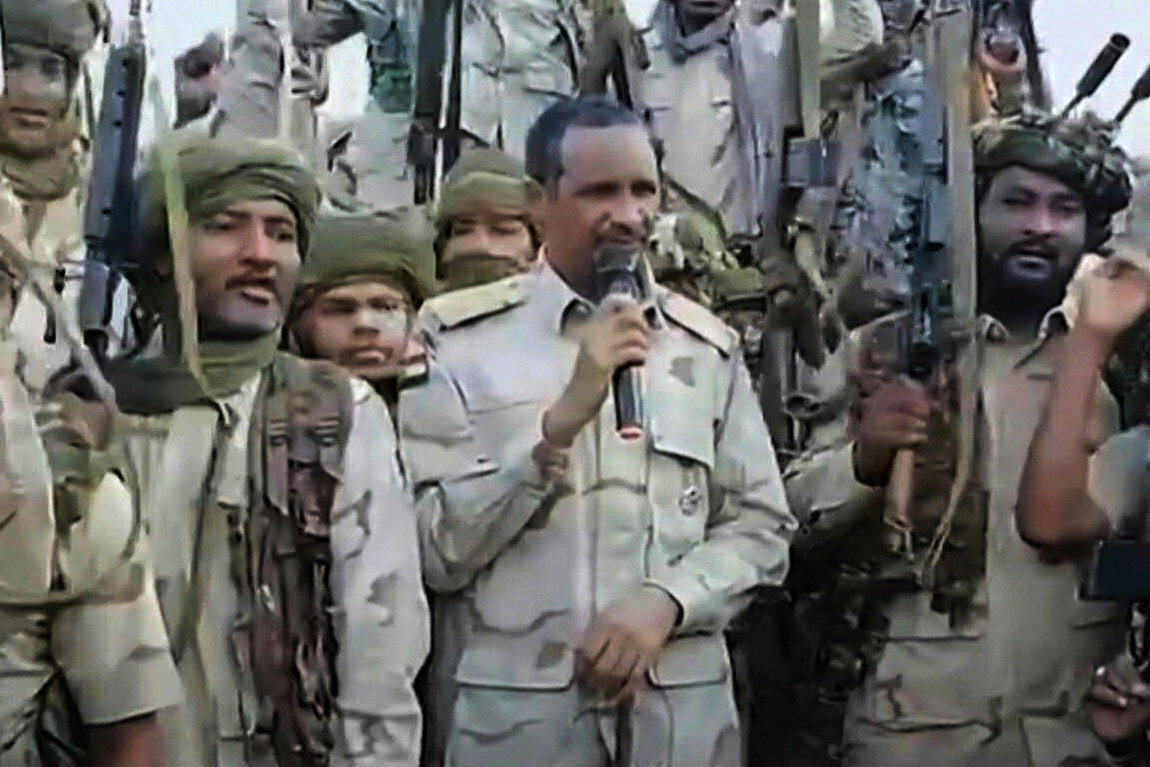
Even as the geography of the conflict shifts, the consequences remain grim for civilians. In Darfur’s Al-Fasher and Zamzam camp, where thousands are trapped in siege-like conditions, Vu describes haunting scenes of families trying to escape on donkeys under the cover of night — leaving everything behind.
“They’re too scared to take cars during the day because they could be arrested or attacked,” she said.
Access to these areas remains severely limited. “We must be realistic about the fact that both sides have obstructed aid,” said Deng. “But RSF-controlled areas are among the worst-hit. Famine conditions are spreading, and aid blockades are used as a weapon of war.”
Still, she says, international humanitarian organizations like the International Committee of the Red Cross and Medecins Sans Frontieres continue to engage with non-state actors.
“Groups like the ICRC or MSF operate based on neutrality, and the RSF knows that,” said Deng. “Sometimes access is possible — but it requires pressure, not just on the ground, but also on the states backing these groups with arms and logistics.”
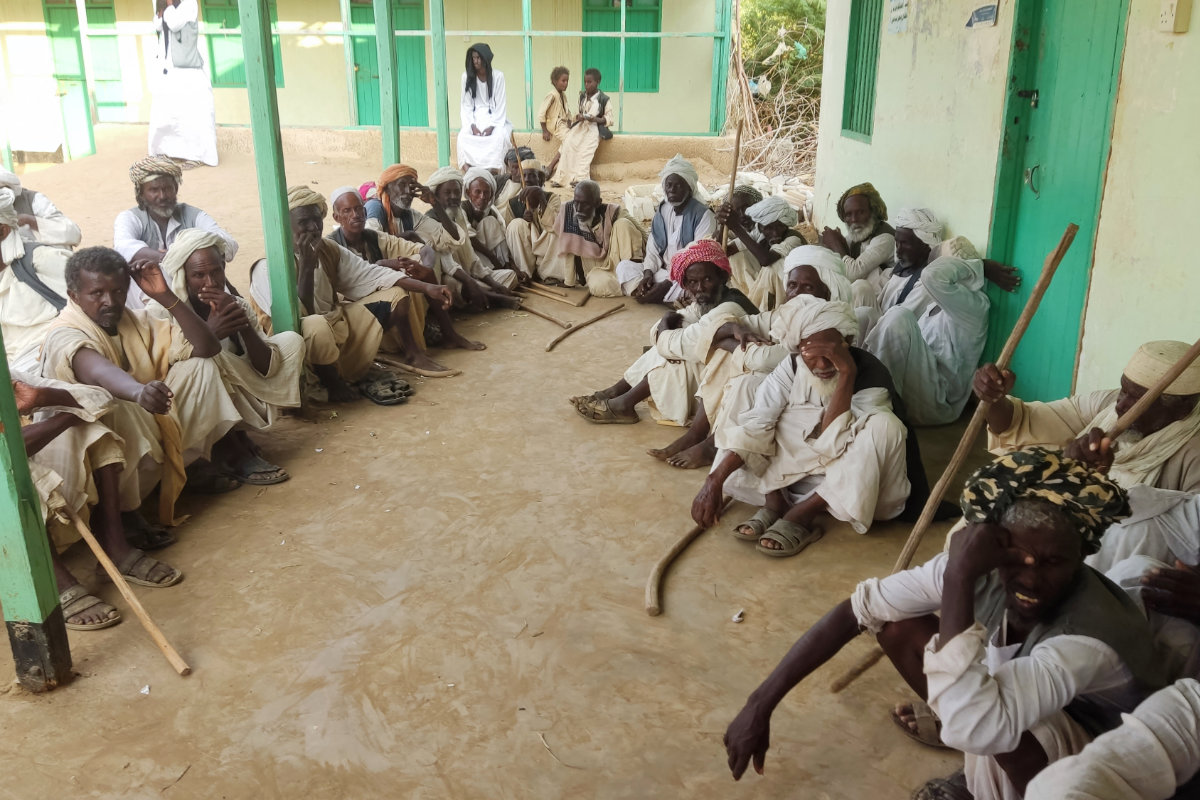

That pressure, so far, has been uneven. The international response to Sudan’s war has been widely criticized as inadequate, both in scale and in coherence. Vu underlines that while the world debates political solutions, people are starving.
“Humanitarian access must prevail, whether there is peace or not,” she said. “Aid should have no side.”
Meanwhile, SAF’s internal cohesion remains uncertain. Analysts have long warned of leadership fractures within the army and its allied militias. Deng points out that the SAF and RSF were not always rivals — they once operated in concert, often carrying out atrocities in Darfur and the south together.

“Now they’ve turned those tactics on each other,” she said. “That a power vacuum would emerge inside the SAF is no surprise. Everyone wants to be seen as the legitimate inheritor of military authority.”
In the background looms a larger question: How much of Sudan’s war is about Sudan at all? “We’re entering an era where global geopolitics is less about rules and more about resources,” said Deng.
“Sudan manufactures its own weapons. It’s geographically pivotal. And it’s being drawn into the gravitational pull of multiple regional powers. That changes how this war plays out — and how it ends.”
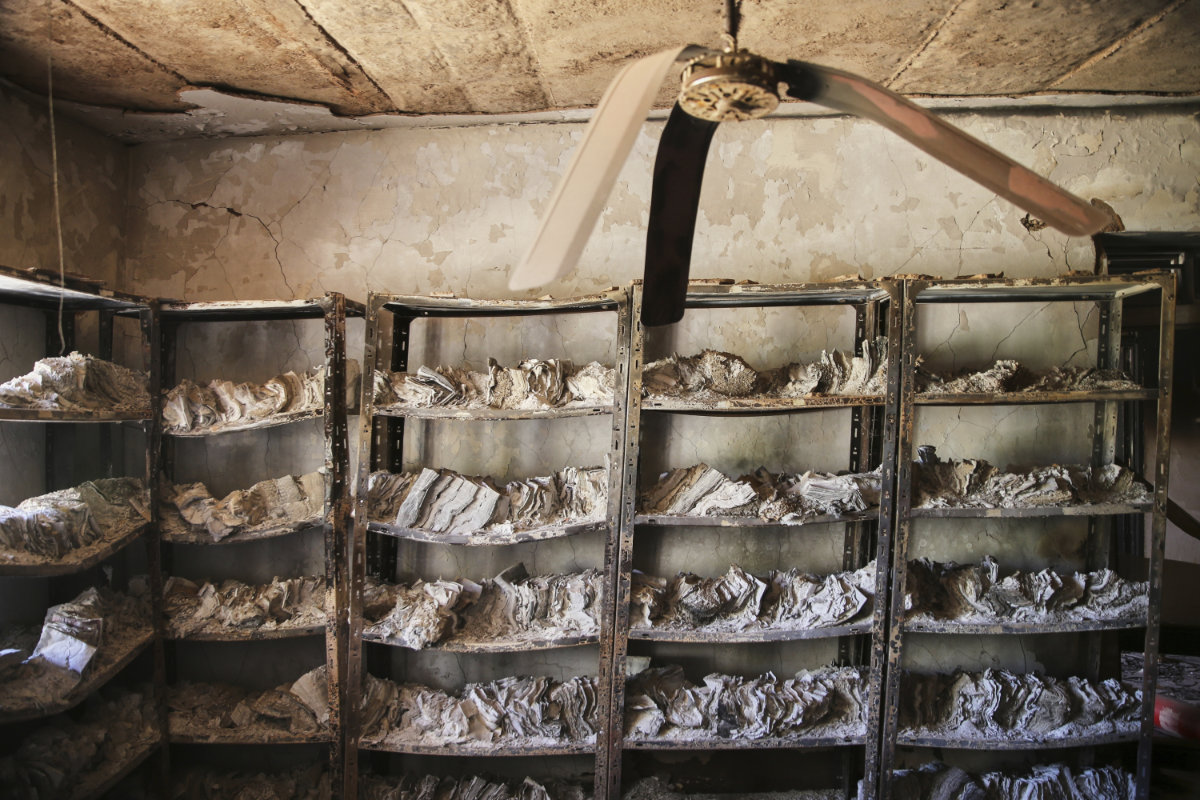

For now, Khartoum remains in limbo. The SAF may have reclaimed the city, but it has not yet won the peace.
Displaced civilians are navigating shattered neighborhoods. Aid might be trickling in, but it is far from sufficient. Across the country, war rages on in new theatres. And a political resolution, however desirable, feels no closer.
“The international community must increase pressure on the warring parties and their backers,” said Vu. “Without strong engagement, especially from countries with influence over SAF and RSF, aid will remain politicized and civilians will keep paying the price.”

Hamas says it accepts a new Gaza ceasefire proposal but Israel makes a counter-offer

- It was not immediately clear whether the proposal changed before Khalil Al-Hayyah, the leader of Hamas in Gaza, announced it had been accepted
- Frustrated by the threat to remaining hostages in Gaza, families and others rallied again Saturday evening to call for a deal that would bring everyone home
CAIRO: The Hamas militant group said Saturday it has accepted a new Gaza ceasefire proposal from mediators Egypt and Qatar, but Israel said it has made a counter-proposal in “full coordination” with the third mediator, the United States.
Egypt early in the week made a proposal to get the troubled ceasefire back on track, following Israel’s surprise resumption of fighting.
It was not immediately clear whether the proposal changed before Khalil Al-Hayyah, the leader of Hamas in Gaza, announced it had been accepted.
Early in the week, an Egyptian official described the proposal to The Associated Press, saying Hamas would release five living hostages, including an American-Israeli, from Gaza in return for Israel allowing aid into the territory and a weekslong pause in fighting. Israel would release hundreds of Palestinian prisoners. The official spoke on condition of anonymity because they were not authorized to brief media on the closed-door talks.
On Saturday, the office of Israeli Prime Minister Benjamin Netanyahu gave no details about Israel’s counter-proposal, which it said was offered after Netanyahu held consultations on Friday.
Israel a week and a half ago ended its ceasefire with Hamas by launching a surprise wave of strikes that killed hundreds of people. The White House blamed Hamas for the renewed fighting.
Israel has vowed to escalate the war until Hamas returns the 59 hostages it still holds — 24 of them believed to be alive. Israel also wants Hamas to give up power, disarm and send its leaders into exile. On Saturday, Israel widened its ground operations in Gaza’s southern city of Rafah near the border with Egypt.
Hamas has said it will only release the remaining captives in exchange for Palestinian prisoners, a lasting ceasefire and an Israeli withdrawal from Gaza.
Frustrated by the threat to remaining hostages in Gaza, families and others rallied again Saturday evening to call for a deal that would bring everyone home.
“The price of your war is the life of the hostages!” some protesters chanted in Tel Aviv. Minor scuffles broke out with police.
“War will not bring our hostages home, it will kill them,” Naama Weinberg, cousin of deceased hostage Itay Svirsky, told a weekly gathering of families in Tel Aviv.
The war in Gaza was triggered by Hamas’ Oct. 7, 2023, attack into Israel, in which Palestinian militants killed some 1,200 people, mostly civilians, and abducted 251.
Israel’s retaliatory offensive has killed over 50,000 people, according to Gaza’s Health Ministry, which does not say how many were civilians or combatants. Israel’s bombardment and ground operations have caused vast destruction and at their height displaced some 90 percent of Gaza’s population of over 2 million people.
Early this month, Israel again cut off all supplies to Gaza to pressure Hamas to accept new terms to the ceasefire that started in mid-January.
Israel had balked at entering negotiations over the truce’s second phase, which were meant to begin in early February. Under the agreement, phase two was meant to bring the release of the remaining 24 living hostages, an end to the war and full Israeli withdrawal from Gaza.
Misinformation, online hate speech fuels panic in South Sudan

NAIROBI: Misinformation and online hate speech are fueling panic and division in South Sudan at a time of acute political tensions that observers fear could drive the country back to war.
Ethnic divisions, particularly between the largest communities, the Dinka and Nuer, fueled the brutal civil war of 2013-18 in which some 400,000 people died.
After years of relative calm, there are worrying signs of renewed ethnic polarization, said Nelson Kwaje, chair of Digital Rights Frontlines, an organization based in the capital Juba that monitors hate speech and misinformation online.
FASTFACT
After years of relative calm, there are worrying signs of renewed ethnic polarization, said Nelson Kwaje, chair of Digital Rights Frontlines, an organization that monitors hate speech and misinformation online.
It comes as the 2018 peace agreement between President Salva Kiir and his long-time rival, First Vice President Riek Machar — who are respectively of Dinka and Nuer ethnicity — is hanging in the balance after Machar’s arrest on Wednesday.
He said mobile phone penetration in South Sudan is only 40 to 50 percent, and social media use around 10 percent at a conservative estimate.
However, those with access are often “the loudest voices,” and their messages spread through communities by more traditional means, helping poison the atmosphere.
Kwaje, speaking from Juba, said life in the city was still “relatively calm.”
But “social media disinformation and hate speech, which is very intense,” is stoking fears.
“There are rumors of assassinations, talk of retaliatory violence ... warnings about ethnic violence,” he said.
First, the brutal killing of an army general captured by members of a predominantly Nuer militia known as the White Army, and then a video appearing to show a young Dinka man being savagely treated by people with Nuer accents.
Ethnic polarization had reduced considerably in recent years, said Kwaje, but those videos have once again “radicalized people.”
“The polarization is obvious,” he said.
“If more incidents go in this direction, it will go to the next level of people taking up arms.”
“South Sudan has limited access to good information and free media. It creates a vacuum,” said Kwaje.
“The people who fill the vacuum are not all nefarious; many just want to share information to protect their community.
“But then you have actors who want to engage in fan engagement, and a small section who are politically motivated.”
He said it was hard to identify who was behind these political messages, but they were consistent and well-designed.
“When we see that level, we know there’s someone on a payroll,” said Kwaje.
“We have better shock absorbers now,” said Kwaje.
When the civil war broke out in 2013, there was an evident tribal divide “from day one,” he said.
The peace agreement that ended the war in 2018, “for all its faults,” engaged the international community, partially unified and disarmed Kiir and Machar’s respective armies, and installed an arms embargo that limited the supply of weapons to some extent, said Kwaje.
“Young people are also aware of the dangers of dividing along tribal lines. There is a lot of messaging about peace.
“But what pushes people to the edge is sharing content showing someone from your tribe being mistreated. Whether that content is factual or not, that immediately radicalizes you.”
Hezbollah says it will act if Israel’s attacks on Lebanon continue

- “We fully complied and we have no presence south of the Litani but Israel did not abide,” Kassem said
- “These (Israeli strikes) are not violations. They are an aggression that crossed all limits”
BEIRUT: The leader of Lebanon’s Hezbollah group warned Saturday that if Israel’s attacks on Lebanon continue and the Lebanese state does not act to stop them, the group will eventually resort to other alternatives.
Naim Kassem’s comments came a day after Israel launched an attack on Lebanon’s capital for the first time since a ceasefire ended the latest Israel-Hezbollah war in November. The strike on Beirut came hours after two rockets were fired from Lebanon toward Israel and Hezbollah denied it fired them.
There was no immediate response from Israeli officials.
Kassem was supposed to give his speech on Friday to mark Jerusalem Day that is usually held on the last Friday of the Muslim holy month of Ramadan. However, it was postponed because of the Israeli airstrikes on different parts of Lebanon including a suburb of the capital.
Jerusalem Day is an annual international day launched by Iran’s first supreme leader Ayatollah Ruhollah Khomeini in 1979 in which Iranians and many of their allies show support for the Palestinians.
Under the US-brokered ceasefire that end the 14-month Israel-Hezbollah war, Israeli forces were supposed to withdraw from all Lebanese territory by late January while Hezbollah had to end its armed presence south of the Litani river along the border with Israel.
The deadline was extended to Feb. 18, but Israel has remained in five border locations while carrying out dozens of strikes on what it said were Hezbollah targets in southern and eastern Lebanon. Last week, Israeli airstrikes on several locations in Lebanon killed six people while an airstrike on a southern village on Friday killed three and wounded 18, most of them women and children.
“We fully complied and we have no presence south of the Litani but Israel did not abide. Israel is carrying aggressions every day,” Kassem said in his televised speech Saturday night.
“These (Israeli strikes) are not violations. They are an aggression that crossed all limits,” Kassem added. He said Israel appears to be pressuring Lebanon to normalize relations with it, a move the Hezbollah totally rejects.
“Israel will not get during peace time what it was not able to achieve by war,” he said. “Let everyone know that this resistance (Hezbollah) is present and ready and at the same time is committed to the agreement.”
But Kassem warned that if Israel does not abide by the deal and the Lebanese state is not able to impose the implementation of the deal through political means, then “we will have to resort to other alternatives.” It was an apparent reference that Hezbollah might resort to its weapons to fight Israeli troops inside Lebanon.
“We will not allow anyone to deprive us from using our force and capabilities to confront this enemy,” said Kassem. He added that Hezbollah “is not weak in facing the projects of America and Israel.”
“Our patience so far aims to give a chance to solutions that could reduce the pains and casualties,” Kassem said.
Hezbollah began launching rockets, drones and missiles into Israel the day after the Oct. 7, 2023, attack on southern Israel by its Hamas allies ignited the war in Gaza. Palestinian militants killed about 1,200 in Israel and abducted 251 others during the 2023 attack.
The Israel-Hezbollah conflict exploded into all-out war last September when Israel carried out waves of airstrikes and killed most of the militant group’s senior leaders. The fighting killed over 4,000 people in Lebanon and displaced about 60,000 Israelis.



















